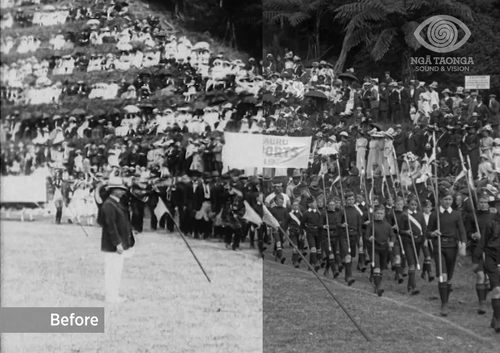
Sometimes you really need to take a second look. Using new techniques can bring a new level of clarity to footage, allowing signs to be read and faces recognised. In audiovisual production and archiving, material can be transferred to a number of analogue and digital intermediate formats over the years. Each generation can contribute to loss of clarity or information. To obtain the best quality scans, we use our high quality film scanners and scan from the very best physical source – usually the original if we have it.
Above is footage of 1912’s Grand School Carnival at Pukekura Park in New Plymouth. This video compares an earlier scan with our latest version. The detail in the opening shots of the parade are dramatic.
This comparison comes from Happy Altitudes in New Zealand’s Southern Alps, filmed in 1933.
Here is one we had tucked away in our ‘digital vault’. This comparison ‘peels back the layers’ on The World’s First Lady Mayor from 1900 – New Zealand’s oldest complete film. It gives an idea of the large amount of work that goes into a digital restoration project.
Take a look at 'A new look at the old Luna Park', another example of modern film scanning.
Learn about all Our Preservation Work and Digitally Future-proofing Aotearoa’s Stories at Ngā Taonga.